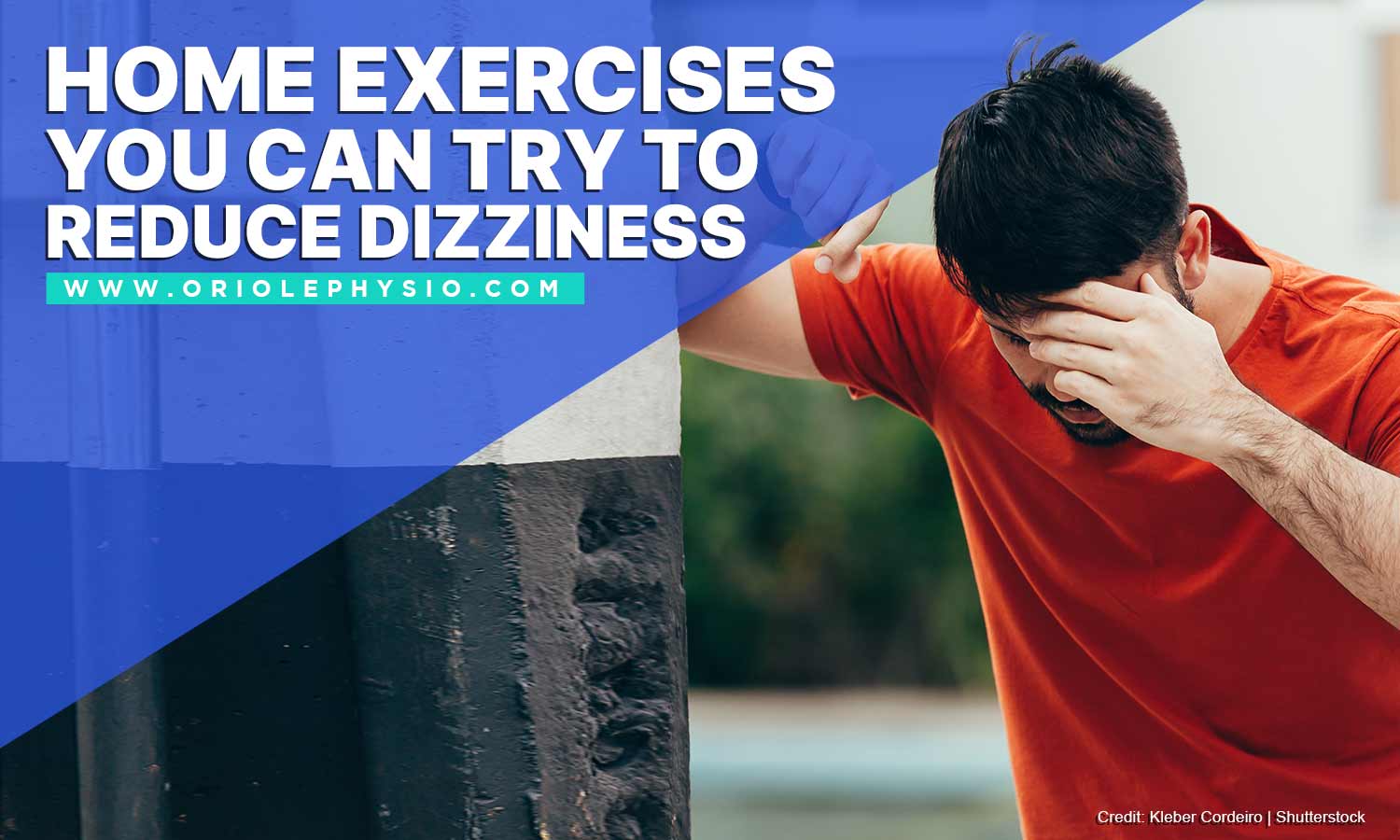Home Exercises You Can Try to Reduce Dizziness
Dizziness is caused by a disruption in your vestibular system, which contributes to your sense of balance and spatial orientation. Depending on the duration and severity of your dizzy spells, you may need a physiotherapist to evaluate your condition so they can determine if you need vestibular rehabilitation therapy (VRT).
If your symptoms are mild and short-lived, however, there are a few vestibular exercises for reducing dizziness that you can try at home.
Balance and Your Vestibular System
The vestibular system relies on input coming from your eyes, ears, and body sensors. The eyes maintain awareness of positioning when in motion and are responsible for sending signals to the vestibular organs inside the inner ears. These vestibular organs are sensitive to head movements and give your ears the ability to govern balance. Body sensors determine movements and orientation.
These factors work together to give you a clear, stable picture of the world around you. When any of these sense organs malfunction, that’s when the feeling of unsteadiness and disorientation kicks in.
Dizziness vs. Vertigo
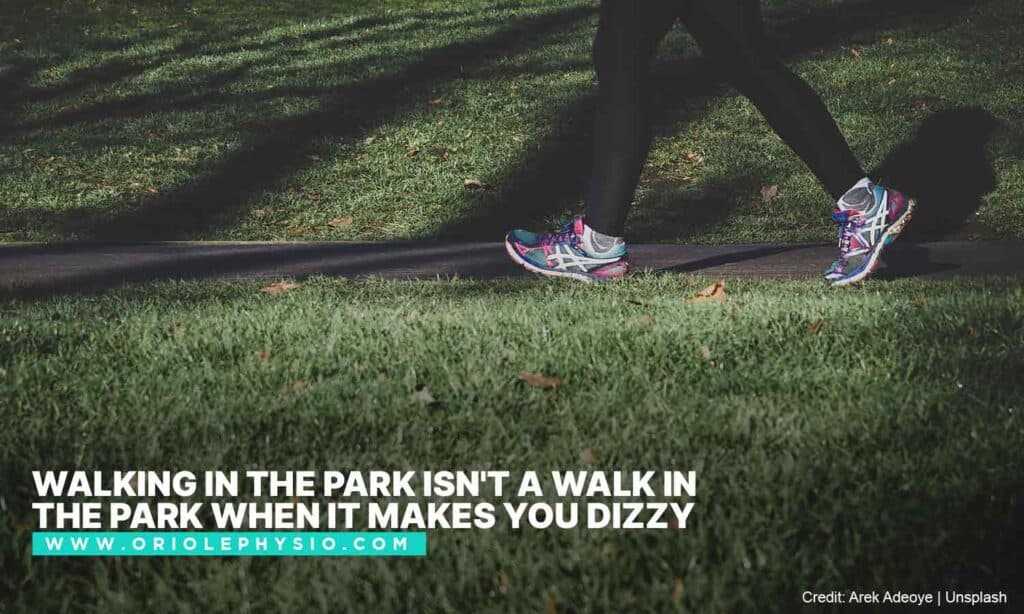
While dizziness and vertigo share similar symptoms, they are not the same. Here’s a breakdown of both conditions:
- Chronic Dizziness
Chronic dizziness is a symptom of vertigo and happens in between vertigo attacks. While generally not dangerous, dizziness is unpleasant and frightening when it results in nausea, fatigue, and difficulty in concentrating. It impedes you from carrying out your daily activities, and it also restricts your body from enjoying vital or leisurely physical activities like strolling, jogging, intensive home exercises, and travelling.
When unaddressed, dizziness can have a grave effect on your balance, which you will need more as you age, in order to lessen the risk of falling down or tripping over yourself.
Not all dizzy spells result in vertigo, but recurring incidents need the attention of a. There is no guarantee that doing home vestibular exercises will ultimately erase the probability of vertigo attacks in the future. You can, however, ease its symptoms to lessen the inconvenience you feel when you experience a bout of dizziness.
- Vertigo
Vertigo is a strong sensation of being off-balance. It happens suddenly and may last several hours. Oftentimes, vertigo renders you immobile, because even the slightest head tilt can make you feel sick. Along with dizziness, other long-lasting symptoms include unsteadiness, tiredness, or a feeling of being hungover.
Peripheral vertigo most commonly manifests in benign paroxysmal positional vertigo (BPPV), wherein small calcium carbonate crystals accidentally enter the semicircular canal of your inner ear due to a specific change in your head’s position. Central vertigo, on the other hand, is caused by a problem in the brain and requires more complicated treatment.
Even if your doctor can’t determine the root of your disorder, there are a few vertigo exercises at home you can try to ease the symptoms and help recalibrate your body so you can balance yourself again. See a doctor to see if your recurring dizziness has resulted in vertigo.
Exercises You Can Try at Home
The aim of any vestibular exercise is to train your body to cope with the imbalance and to eventually reorient yourself after bouts of dizziness or a serious vertigo attack. The movements that comprise each dizziness exercise regime are based on normal human movements that we voluntarily and involuntarily do on a daily basis. This means that these movements are generally safe for the human body, but can cause you problems if you experience chronic dizziness, or have been diagnosed with vertigo.
The most viable thing to do is to pick out one exercise regime which you think you can do all by yourself at home, and do the exercises regularly. Gradually increase the speed of each movement during your next exercise set. Make sure that there is enough space in your home for you to move around, and that you are in a safe environment during exercise. IMPORTANT: Do NOT DO ALL exercises one after the other.
- Cawthorne-Cooksey (CC) Exercises
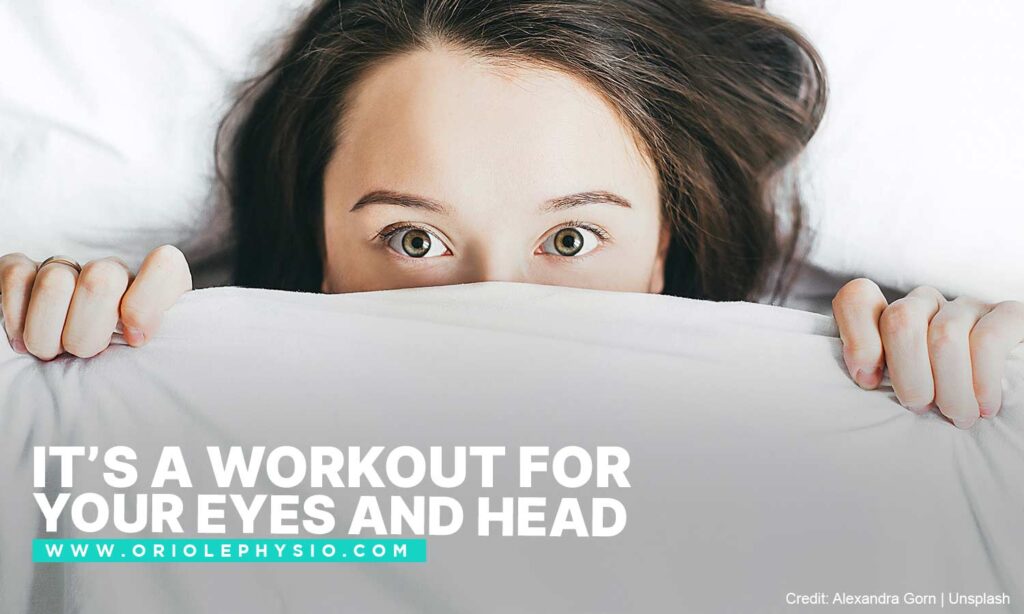
The most commonly used vestibular exercise routine is the CC exercises, which aim to:
- relax the neck and shoulders
- train the eyes to move independently with the head
- improve your balance in your daily activities
- practice movements that otherwise cause dizziness
- improve your body’s general coordination.
You are advised to perform each exercise one at a time, spending 1 to 2 minutes each, and gradually moving from one set to the next. Take note of how dizzy you are after each set, and pace your progress accordingly. On your first try, do not do more than 10 in one go.
Set 1: In bed
- Eye movements – Move your eyes up and down, then side to side. Do these while focusing on a finger moving from 3 to 1 foot away from your face. Start slow, then pick up the pace.
- Head movements – Bend your head forward, then backward. Next, turn your head from side to side. Do this slowly at first, then quickly. Then, close your eyes.
Set 2: Sitting
- Follow the eye movement instructions in Set 1.
- Shrug, then move your shoulders in a circular motion.
- Bend forward, and pick up an object from the ground.
- Bend side to side, and pick up an object from the ground.
Set 3: Standing
- Follow the eye movement instructions in Set 1.
- Sit then stand, with eyes open. Repeat, with eyes closed.
- Throw a ball from hand to hand above eye level. Repeat, but moving the ball under the knee.
- Sit then stand, turning around as you switch positions.
Set 4: Moving about
- Walk up and down a slope.
- Walk up and down a staircase.
- Throw and catch a ball.
- Play any game that involves stooping, stretching, and aiming.
- Basic Shake and Nod Exercises
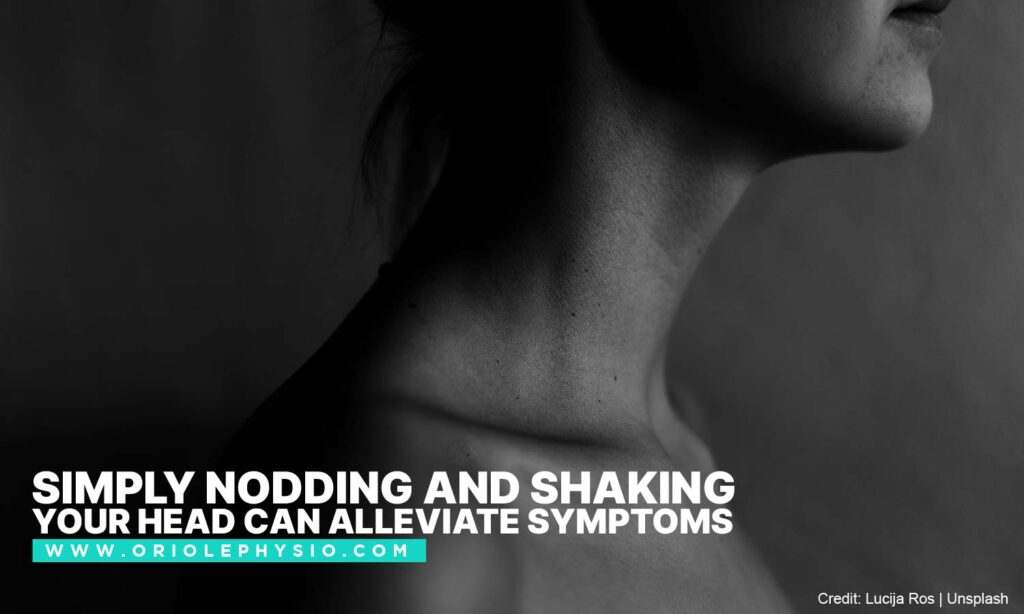
The Vestibular Disorders Association (VeDA) recommends a simple 6-step regime that involves shaking and nodding your head and making modifications to those 2steps. As a pre-ritual, you are advised to take deep slow breaths upon becoming dizzy, shrug your shoulders, and circle them around a few times. Monitor how dizzy you get after each step.
Step 1: Shake your head by turning it left to right 10 times in 10 seconds. See how far you can twist without feeling discomfort.
Step 2: Nod your head up and down 10 times in 10 seconds. See how far you can tilt without feeling discomfort.
Step 3: Repeat Step 1, this time with eyes closed.
Step 4: Repeat Step 2, this time with eyes closed.
Step 5: Repeat Step 1, this time while staring into space.
Step 6: Repeat Step 2, this time while staring into space.
- Others
There are a few exercises for vertigo dizziness, like the Bradt-Daroff, Home Epley Manoeuvre, and Foster Manoeuvre, that are meant to address peripheral vertigo caused by benign paroxysmal positional vertigo (BPPV). If you have been diagnosed with central vertigo or peripheral non-BPPV, these exercises may not work for you.
If these home vestibular exercises make you dizzy after the first try, continue working on them until you feel that you are regaining your balance (i.e. you are less dizzy when you go for a walk, or when you turn your head).
If you do not feel dizzy, this means the exercise isn’t working. You might need to see a physician so you can be diagnosed and given proper treatment.
Active Sports and Wellness Activities
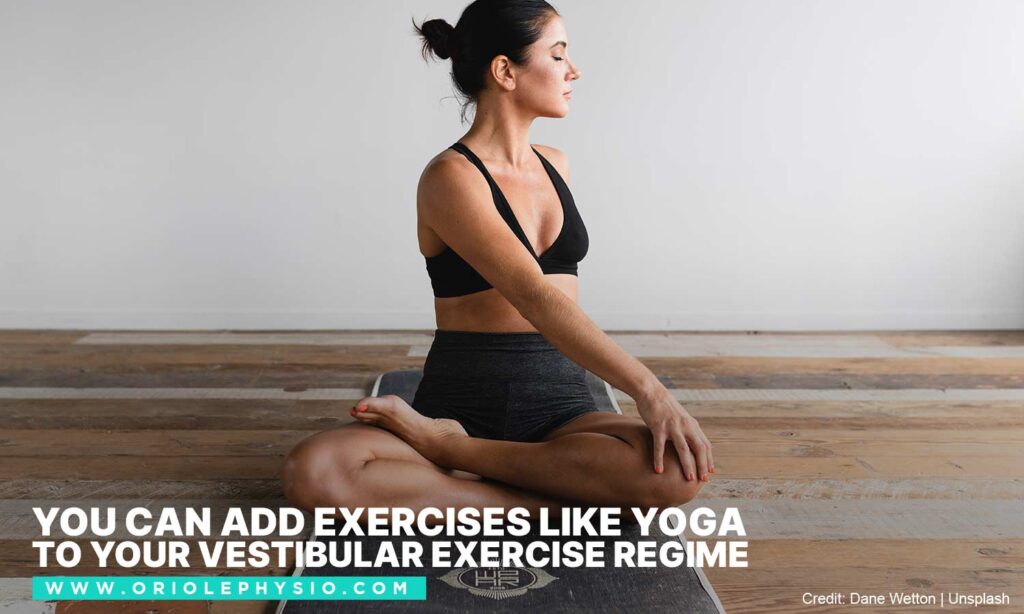
There are a few activities you can do to supplement your home exercises so you can train your body to cope better with your dizzy spells. Balance rehabilitation specialists suggest that active ball sports, such as basketball, table tennis, and volleyball, are well-suited to balance training and can help you recalibrate your vestibular system.
If you are not into sports, great alternatives include regular walking, dancing, or exercising at home (through yoga, tai chi, or virtual sports). You can also add special exercises for specific instances that make you dizzy such as turning in bed, reaching, or seeing striped lines.
How Effective Are These Exercises?
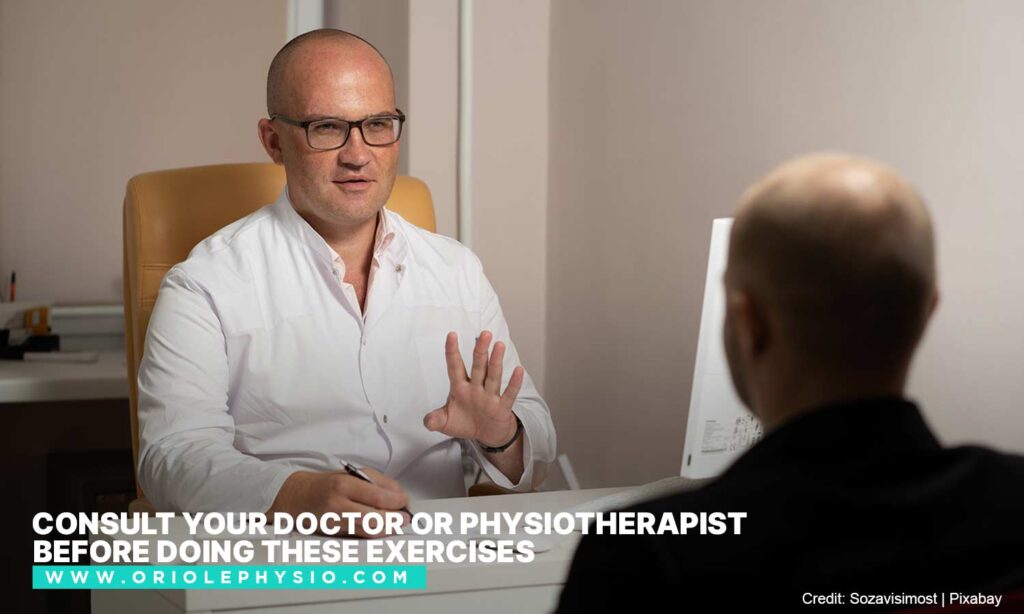
Vestibular exercises prove to be more effective than medication. In a group-based study, four out of five people (75% to 80% of the whole study group) reported that their dizziness symptoms were eased by repetitive and consistent execution of the basic exercises recommended by the VeDA. Time and consistency remain important factors in increasing the rate of success for each patient towards eventual vestibular compensation.
If you suspect that your recurring dizzy spells indicate a more serious vestibular problem, it is best that you seek professional help whether from your doctor or a physiotherapist well-versed in vestibular system issues.
Call (416) 221-0772 to schedule an appointment at Oriole Physiotherapy today.

